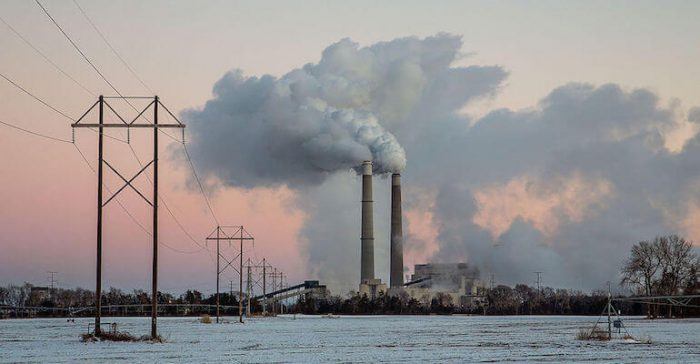The West’s largest coal-fired power plant is closing.
The Washington Post, February 14, 2017
In the past three weeks, owners of two of the nation’s biggest coal-fired power plants have announced plans to shut them down, potentially idling hundreds of workers. One plant in Arizona is the largest coal-fired facility in the western United States.
“[We’re] bringing back jobs, big league,” President Trump said Tuesday after signing legislation that would scrap requirements for natural resources companies to disclose payments to foreign governments. “We’re bringing them back at the plant level. We’re bringing them back at the mine level. The energy jobs are coming back.”
Yet even with his efforts to roll back Obama-era energy regulations, a lot of coal jobs won’t ever return, mainly because of harsh economic realities.
Case in point: The decision this week by the utilities that own the Navajo Generating Station outside Page, Ariz., to decommission the plant at the end of 2019, decades earlier than expected.
The 2,250-megawatt plant has faced increasing financial pressure in the face of record-low natural gas prices, which have made it more expensive to produce electricity at the facility than to purchase it from cheaper sources.
“The utility owners do not make this decision lightly,” said Mike Hummel, deputy general manager of Salt River Project, which operates the plant and owns it along with several utility companies and the U.S. Bureau of Reclamation.
“NGS and its employees are one reason why this region, the state of Arizona and the Phoenix metropolitan area have been able to grow and thrive,” he added in a statement. “However, [its owners have] an obligation to provide low-cost service to our more than 1 million customers, and the higher cost of operating NGS would be borne by our customers.”
Environmental activists welcomed the prospect of closing the plant, one of the biggest polluters in the country. The Navajo Generating Station was third on a 2014 Environmental Protection Agency list of major carbon-emitting facilities.
But its closure would deal its community a significant economic blow. Between the plant itself and the Kayenta Mine — located roughly 80 miles away, it provides all the coal for the generating station — nearly 800 workers could find themselves out of work. Many are members of the Navajo and Hopi tribes, which also receive royalties from the plant. In their announcement, the plant’s owners said the tribes or others could still step in to operate the facility beyond 2019.
Less than three weeks ago, Dayton Power and Light reached an agreement with the Sierra Club to close its Killen and Stuart coal-fired power plants in Ohio due to economic reasons. The plants would close in June 2018, the company and nonprofit said.
The Stuart plant, built in the early 1970s, has a capacity of 2,440 megawatts. The Killen plant, built in 1982, has a capacity of 666 megawatts.
Dayton Power and Light submitted a closure plan for approval by the Public Utilities Commission of Ohio. The utility said it would develop solar and wind projects generating at least 300 megawatts of power no later than 2022. It also proposed a variety of energy-efficiency steps and grid improvements.
The Sierra Club applauded the moves, which it said would save $37 million a year in health-care costs by avoiding more than 1,200 asthma attacks, 100 heart attacks and nearly 100 deaths linked to the two plants’ emissions. Both facilities are among the largest sources of pollution in the United States, affecting residents as far away as the Atlantic coast.
“The economics of coal are increasingly bad,” said Bruce Nilles, a Sierra Club lawyer. State governments and utilities commissions “will do a lot to prop up” ailing plants, he said, but “it gets increasingly expensive.”
